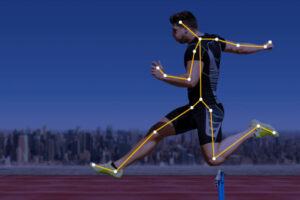Unrelenting acceleration
 The acceleration of technology is unstoppable and has led to a revolution in every aspect and every area. In addition to changing the way we communicate, the technology available today has altered the way we live. Thanks to it we have become more efficient at work and in our personal lives. In the case of sport, it has almost completely transformed it, for professionals and amateurs alike.
The acceleration of technology is unstoppable and has led to a revolution in every aspect and every area. In addition to changing the way we communicate, the technology available today has altered the way we live. Thanks to it we have become more efficient at work and in our personal lives. In the case of sport, it has almost completely transformed it, for professionals and amateurs alike.
The role of technology in sport has decisively shaped both the broadcasting of sporting events and how athletes perform at them.
The spectacle of sport
While the use of similar assisted refereeing systems, such as the Hawk Eye in tennis, and replays in basketball, have been in place for a long time, the implementation of the VAR (Video Assistant Referee) in football has been a major “change in the game’s rules” and, at the same time, the most controversial innovation in the history of this sport.
Cameras and sensors in motorcycle racing championships, placed on the bikes and the racers’ equipment, make the way we are able to perceive the racers’ speed and the layouts of the tracks extraordinary.
Training and competition
Athletes like runners and cyclists often use monitoring devices; smart bands or watches with GPS indicating one’s location, route, heart rate, speed, calorie consumption … And there are all kinds of training tools that store information on one’s history and progress.
Thermography is a technique that can measure temperatures from a distance, without the need for physical contact with the object in question. Analyzing images of various parts of the body to detect temperature differences in muscles can prevent strains and injuries. And, in a few years we will probably all have thermal imaging cameras on our mobile phones.
Using sensors attached to the body, they can measure distances travelled and are able to draw heat maps of the most trodden places on fields and courts.
Watches are increasingly being used to measure physical abilities and to safeguard health, or even to save lives, as in the case of electrocardiograms.
Virtual personal trainer
Daniel Fernández, with a degree in Physical Activity and Sports Sciences, has been publishing different workouts on his Instagram profile for some time. Now, when we all need to stay home longer, he teaches simple workouts and even makes training materials out of everyday objects.
In addition, there are a multitude of wearables that can be extraordinary helpful.
Smart shorts to improve our training
Tribe Wearables offers high-tech clothing for training, and they are working on sports shorts that detect every movement, tell us how to improve, and help prevent injuries.
A visit to a biomechanics laboratory in 2013 inspired Demetres Stordopoulos, its founder, to use the laboratory’s monitoring technology in sportswear.
Each pair of Tribe Wearables shorts contains sensors that collect data and send it to an app, which then suggests which exercises would best suit the user. It also provides virtual coaching, offering feedback and making sure that a workout features the right level of intensity.
Thompson says recent progress in areas such as smart fabrics, motion capture technology and Artificial Intelligence allow wearable tech companies to develop clothing for specific tasks.
“Smart clothing is also used in the Health and Defence sectors, where the continuous monitoring of physical activities is very important,” he adds.
The industry is dominated by smartwatches, which account for 60% of the wearable device market. Biochemical sensors, fall detection and heart rate monitors are becoming standard on these devices, which can also carry out smartphone functions like playing music and tracking locations.
The best app to know where to surf
Only real experts are able to read each and every one of the factors influencing the waves they are going to surf.
To know what you may find before getting on your board, you have to know the tides in the area, as they move the water and interact with the seabed. There are beaches where the surfing is better at high tide, and others, at low tide. The sea in the background also influences the waves, as well as the wind, about which we must consider not only its strength, but also its direction. To detect all this, there are wave forecasting apps.
The Spanish digital platform Todosurf has developed one of these applications. Programmers, meteorologists and surfers collaborate by interpreting the data offered by AEMET, the European Meteorological Agency and State Ports to offer a reliable prediction of what those heading into the sea can expect to find.
The platform has 319 spots registered in Spain, but it also offers information on wave conditions in up to 12 countries, such as Argentina, Chile, France and Morocco.
A tennis coach on the handle of your racquet
One of the first sports that has incorporated technology into it, with this being well received, has been tennis. This has included enhancing rackets with new materials, improving the design of tennis players’ clothing and footwear, to the use of new devices that are helping tennis players (professionals and amateurs) to improve their performance.
The “Zepp Tennis Sensor” is attached to the racquet, records its movements and gathers data on racquet speed, turns, positions and where the ball is hit on the strings. All this data is sent to a mobile application that analyses it in real time and offers statistics and tips for improvement.
Regardless of whether we enjoy sport as a spectacle or compete as a professional, we must not forget the importance of exercising as an essential activity to lead healthy lives. Technology is now making this easier than ever.















